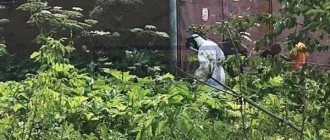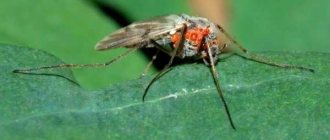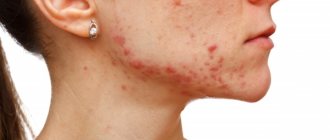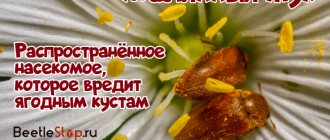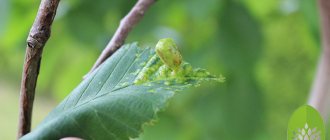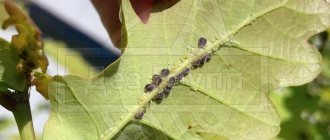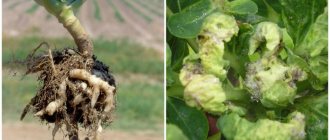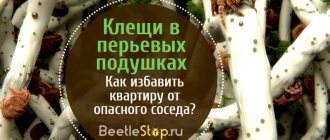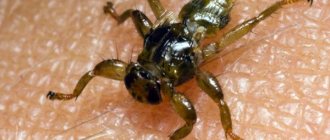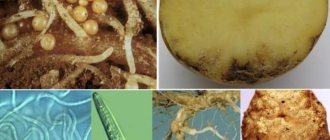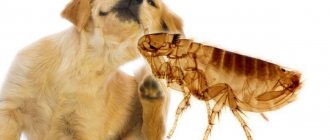The term red tick may refer to:
- The family of acariform mites (Acariformes), which includes several tens of thousands of species of mites.
- The genus of red mites (Trombidium), which includes about 30 species of mites.
- The species Trombidium holosericeum is the common red beetle.
- Any tick that appears red when you find it.
The first three options are derivatives of each other and are related.
The red beetle family includes thousands of different species that can have significant differences in both appearance and lifestyle. In the context of this article, we will consider the genus Trombidium and one of its most common species in Russia - the common red beetle (Trombidium holosericeum). If you are not sure about the species of the parasite and simply found a red insect similar to a tick, compare the found pest also with the taiga tick
, European forest and
elk ticks
. In this case, determining the species is important, since these parasites, depending on the species, can be more or less dangerous to humans and domestic animals, and may or may not carry any diseases. If an insect looks more like one of these three species, study information about it. If the pest looks exactly like the red beetle in the scientific understanding of this species, you will find all the necessary information below.
Description and appearance
The red color, from which the tick gets its name, is not the only distinctive feature of this parasite. More indicative are the delicate hairs with a thickened base that cover the body of the red mite, making its cover look like velvet, which is why the pest is also called the velvet mite. All bristles grow at the same angle relative to the body, which significantly increases the maneuverability of the red beetle.
The tick is distinguished by its specially constructed eyes: they are located on stalks. The organ of vision is primitive; the eyes are only capable of reacting to the intensity of light.
Appearance
The length of an adult tick with a red “butt” reaches 4 millimeters. Like other arachnids, the red beetle has 4 pairs of legs.
Red flat mite larvae are not much different from adults, except for size. Their body is not divided into segments, but resembles a bag. In a hungry larva, folds are clearly visible on it, which gradually straighten as they become saturated, which allows the parasite to consume more blood or hemolymph. The color intensity increases as the larva becomes saturated. The larva has fewer legs - six. As it turns into a sexually mature individual, another pair appears.
The function of touch is performed by two long bristles on the back - sensilla, which help the tick to detect its future victim.
The red beetle's paws consist of seven segments and end with claws that help the parasite cling to the fur or clothing of its victim. There is an anus on the abdomen.
Popular types of ticks in the regions of our country
Ixodidae
The most common ticks that transmit infectious diseases in Russia are ixodid ticks. There are more than 240 species in this family. Ixodid ticks are carriers of tick-borne encephalitis and borreliosis. These are subspecies of taiga and dog ticks that live in dark, damp places, spreading from the Baltic states to the Far East.
Hyalomma
These representatives are also carriers of various diseases, including Crimean fever. They live in the southern regions of our country. They differ in that when the larva transitions to the nymph stage, the tick remains on one host, and the already adult tick moves to a new host. Its habitat is the southern steppe regions, the Crimean peninsula, and the Mediterranean coast. This mite is resistant to acaricidal drugs.
Dermacentor
This type of arachnid carries tick-borne encephalitis, Omsk hemorrhagic fever, and tularemia. Representatives of this species also infect people and dogs with piroplasmosis. Young ticks parasitize rats and field mice, which expands the list of diseases transmitted if the rodent is infected. Before eating, the parasite makes several test punctures. There is a white pattern on its dorsal shield.
Meadow tick
This is another dangerous representative of this type of insect that lives in open areas (forest glades, meadows, lawns). Particularly common in areas of mass livestock grazing. The parasite easily survives in water meadows. The highest degree of its activity is in the spring.
Haemaphysalis
In addition to the varieties described above, pasture ticks are widespread in Russia. He lives in the steppes, forest-steppes, and gullies of the European part of Russia. Breeds in humid, warm regions. The peak of activity occurs in the summer; representatives of the species are carriers of tick-borne rickettsiosis and encephalitis.
Brown dog tick
Distributed in all regions of Russia, it is characterized by its small size and brown body color. Particularly active in the Black Sea region. It is a carrier of canine piroplasmosis and Marseilles fever. It is a parasite on dogs, but sometimes attacks humans. A whole colony can develop from several individuals in a doghouse, as the female lays eggs in the crevices. After a couple of months, a mass emergence of mature individuals is possible.
Boophilus
Another example of a tick that spends its entire life on one host. A tick that develops from an egg leaves its host only to lay its eggs.
Important!
It is not always possible to detect an attached parasite, since it usually settles in hard-to-reach places (body hair, head, back, armpits, groin). After being outdoors, carefully inspect yourself, your loved ones and your pets for ticks.
Bed mites
This type of bed (linen) mites deserves special attention. Individuals live next to humans. It is quite difficult to remove them, since the parasites adhere to materials with their suction cups and claws. An adult bed mite reaches 0.5 mm in length and is therefore invisible to the naked eye. There are parasites in almost every home, where they enter through animals or household dust. They live in bedding, carpets, blankets, indoor shoes, etc.
Important!
The difficulty of fighting the parasite is that it is found everywhere (crowded places, public transport, offices, laundries, hairdressers, etc.). There are more than 100 mite representatives in 1 gram of dust.
The bed tick lives for about 2.5 months, while one female manages to lay more than 300 eggs. They do not feed on blood and do not parasitize humans. They eat dead cells of epithelial tissue. But tick feces cause persistent allergic reactions.
Reproduction and life cycle of the red mite
Red heifers have a rather complex development cycle. Like all ticks, they are oviparous. Egg laying occurs in autumn. The velvet mite lays up to 50 eggs per day in the soil, which totals up to 900 eggs over the entire breeding period.
The incubation period lasts 1-2 months. The prelarva (first stage) released from the egg does not actively feed or move. It takes the substances necessary for life from the yolk reserve in the intestines. Within a week, the larva feeds independently on the hemolymph of insects and arachnids.
After the next resting stage (pupa-shaped), the larva in July-August becomes a deutonymph - as predatory as an adult red mite. Some time later, the next dormant stage begins, ending with the appearance of adults. After the final transformation, the entire reproduction cycle is repeated again.
In adults, the differences in the reproductive apparatus are insignificantly expressed. Insemination occurs spermatrophically - the male attaches the capsule with the sperm contained in it to the female’s body or inserts it inside her through the surface tissues.
Life cycle
Prevention
To prevent red mite infestation of plants, take the following measures:
- in the fall, remove fallen leaves from under the tree trunks, as pest eggs may remain there;
- remove old bark with a metal brush, thereby removing areas suitable for laying eggs;
- inspect plant leaves more often to detect signs of red mite infestation in time and prevent the colony from growing;
- spraying with water - many pests are afraid of moisture, so they do not settle on frequently irrigated plants;
- regularly treat gardens, vegetable gardens and indoor plants with acaricides, especially in hot and dry weather: such conditions are ideal for the active reproduction of pests.
Feeding features of the red tick
Red beetle mites mainly eat insects, their eggs and larvae. Cannibalism is quite common.
The larvae are especially voracious, absorbing 2-3 times more food than an adult insect.
The red heifer feeds on fluids and tissues of the body, and not specifically blood, although physiologically it can digest it.
Thus, the red tick is not a blood-sucking parasite. However, it is a predator, as its diet includes living organisms.
It is possible to defeat parasites!
Antiparasitic Complex® - Reliable and safe removal of parasites in 21 days!
- The composition includes only natural ingredients;
- Does not cause side effects;
- Absolutely safe;
- Protects the liver, heart, lungs, stomach, skin from parasites;
- Removes waste products of parasites from the body.
- Effectively destroys most types of helminths in 21 days.
There is now a preferential program for free packaging. Read expert opinion.
Read further:
No to ticks: where to order insect repellent treatment?
Products for cats against ticks and worms: list of the best
Demodex Folliculorum mite (acne ironweed): description, development cycle and treatment methods
Treatment and diagnosis of tick-borne encephalitis
What is giardiasis? Why does it occur and how to treat it with medication
Cat after deworming pills: what the reaction and consequences might be
Is the velvet mite dangerous for humans?
The red tick is dangerous to humans and animals only in the fall at the larval stage. She is very aggressive and attacks people. This can also be fraught with serious diseases, for example, skin dermatitis or thrombidiosis.
In rare cases, the red beetle tick can cause a dangerous natural focal disease - tsutsugamushi fever, scrub typhus, Japanese river fever. These diseases lead to death in 30% of cases.
However, many experts believe that fears about the little red tick are greatly exaggerated. Much more harm is caused by chemicals and insecticides used to combat these insects.
Ways to fight
How to deal with red mite? The pest is immune to insecticides. It is combated using the following chemical and biological methods:
- The red tick feeds and rests periodically, so it is recommended to use acaricides to combat it. When using them, you should remember that these are dangerous products not only for pests, but also for humans. Treatment with enteric contact acaricides must be carried out repeatedly (in 3-4 passes) at short intervals. After using the drug, it is not necessary to take the plant out into fresh air. The most effective drugs are Actofit, Vermitek and Fitoverm. The treatment is carried out at an air temperature of +18°C and above. The solution can only be used fresh.
- It is undesirable to use organophosphorus preparations in residential premises, since they are not harmless to the human body. When evaporating, the drug will release toxic chemical compounds. Suitable for use in greenhouses.
- Treatment with acaricides is the best option for pest control. It is desirable that it have a wide spectrum of action. The following products are used: Sunmite, Nissoran, Envidor. Treatment with drugs such as Actellik, Marshall, Actofit, Neoron, Ortus should be carried out in a well-ventilated area or directly outside. "Marshal" is used only in greenhouses.
Signs of a tick bite and first aid
The main signs of a bite: an itchy red spot followed by the appearance of a nodule (papule) measuring 3 mm. The nodule gradually increases in diameter and disappears on the 8th day. A dark, very itchy spot appears in place of the papule. It remains on the body for about 2 weeks. When scratching, an ulcer may form. In addition, the wound can easily become infected.
Antihistamines
First aid:
- thoroughly rinse the bite site;
- treat the affected area with an antiseptic;
- in case of an allergic reaction, take antihistamines;
- use antipruritic and painkillers;
- make lotions using decoctions of chamomile, calendula, and celandine.
Therapy for tick-borne rickettsiosis
Treatment is carried out in a hospital, in the infectious diseases department. On average, the treatment course before discharge is 10 days. Patients are prescribed bed rest, nutritious meals, and plenty of fluids. The diet should contain a sufficient amount of protein. Clinical recommendations include:
- To eliminate the causative agent of infection, tetracycline antibiotics or levomecitin are prescribed. Minimum course – 3 days. The treatment regimen and dosage are determined by the doctor. In most cases, the patient takes Doxycycline with a daily dosage of 100–200 mg or Tetracycline. If the patient is in serious condition and is not able to independently take the tablet form of the drug, the medicine is administered intravenously. Antibiotic therapy continues until body temperature normalizes.
- To ease the course of the disease, antipyretic drugs are used.
- According to indications, therapy is supplemented with cardiovascular drugs, glucocorticosteroids, and antihistamines.
- For detoxification, droppers are placed with a solution of glucose and ascorbic acid.
Use of folk remedies
First, you need to remove damaged leaves from plants and flowers. If any of the plants is heavily infected, then it is advisable to get rid of it so as not to put the rest of the vegetation at risk.
- One of the available means for removing red mites is a soap solution. They need to wipe all parts of the leaves and leave the soap suds on them for 2-3 hours. Then wash off the remaining soap and cover the plant with a plastic bag for a day. Condensation moisture accumulating under the bag will kill mites, but it is unlikely that you will be able to get rid of pest eggs in this way.
- If a plant affected by red mite grows in the garden, then all plantings must be irrigated abundantly with water once a week.
- Treating plants with garlic infusion helps cope well with red mites. It is prepared as follows: chop 2 garlic heads, pour in 1 liter of water and close the lid tightly. The jar is placed in a dark place for 5 days. The resulting solution is diluted with water in a 1:1 ratio before use.
- The red mite cannot tolerate exposure to ultraviolet rays, so it can be effectively combated by exposing the area where pests accumulate to ultraviolet light for 2 minutes. The procedure is carried out once a week. You can get ultraviolet radiation from a special lamp.
- Onion infusion will help you quickly deal with red mites. It is prepared like this: 100 g of onion peels are infused in 5 liters of water for 5 days.
Fighting red mites is a long and difficult task, but systematic care of cultivated plants and the creation of conditions favorable for their growth will help get rid of parasitic pests.
Symptoms of the lesion
You can notice the presence of red apple mites on trees by the appearance of numerous light spots on the affected leaves. They are especially noticeable near the veins. The leaves themselves take on a gray-red color and look as if they are dusted with road dust.
Flowers, shoots, fruits, and succulent shoots can be damaged by the pest. The larvae live and feed on the bottom of the leaves.
Upon careful inspection of fruit trees, it is not difficult to identify mite damage.
Mites infestation begins from the inside of the tree crown, then they move higher along the trunk. A severely affected plant may take on a pinkish or reddish hue. Damage and leaf fall can cause the tree to lose up to 40% of its chlorophyll.
